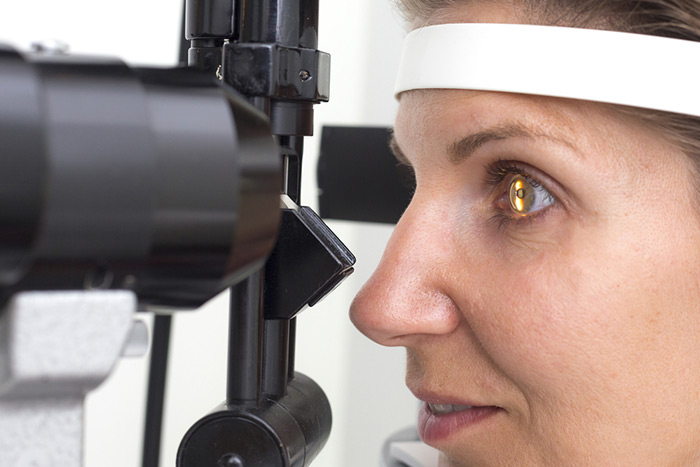Men and women with keratoconus typically present with myopia (nearsightedness) and astigmatism. Some are surprised to learn that they have keratoconus which results in a thinning of the corneal tissue. This thinning, combined with the normal pressure from within the eye, causes the cornea to bulge, changing from round to cone-shaped and distorting vision.
Keratoconus causes a steepening of the corneal curve that happens gradually. As the cornea changes shape from round to more cone-like, vision deteriorates. In most cases, the changes in the cornea due to keratoconus begin in the teen years and stabilize at about 30 years of age. Patients are almost always left highly nearsighted with astigmatism.
The cause of keratoconus is unclear, although it is believed to be hereditary and environmental factors like allergens can worsen the condition. The changes from keratoconus may progress quickly or gradually; they may also stop altogether or continue over decades. It is not uncommon for keratoconus to present first in only one eye, however both eyes will eventually be affected.
Diagnosing keratoconus involves measuring the shape of the cornea, usually with corneal topography, which captures an image of the cornea in seconds.
At Visionary Eye Doctors, we are fortunate to have our Johns Hopkins, Wilmer Eye Institute, fellowship-trained cornea specialist, Daniel Sarezky, MD for the optimal treatment of this condition.
Symptoms of Keratoconus
- Vision changes such as double vision in just one eye
- Distortion of objects both near and far
- Halos or streaking around lights
- Difficulty driving due to blurry vision
Treatments for Keratoconus
When glasses alone don’t do the trick, keratoconus is often treated with specialty contact lenses to improve your vision. Additionally, Dr. Sarezky can help keratoconus patients to have clearer vision with the Corneal Collagen Crosslinking (CXL) procedure to stop the progression and strengthen your cornea. Ultimately, as the condition progresses, it may be necessary for a corneal transplant surgery using the latest techniques.


